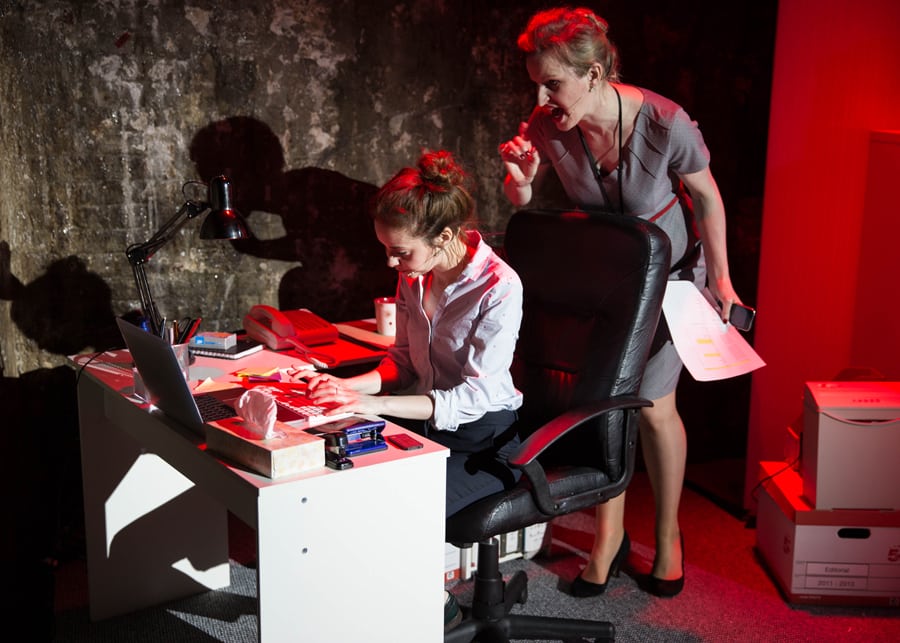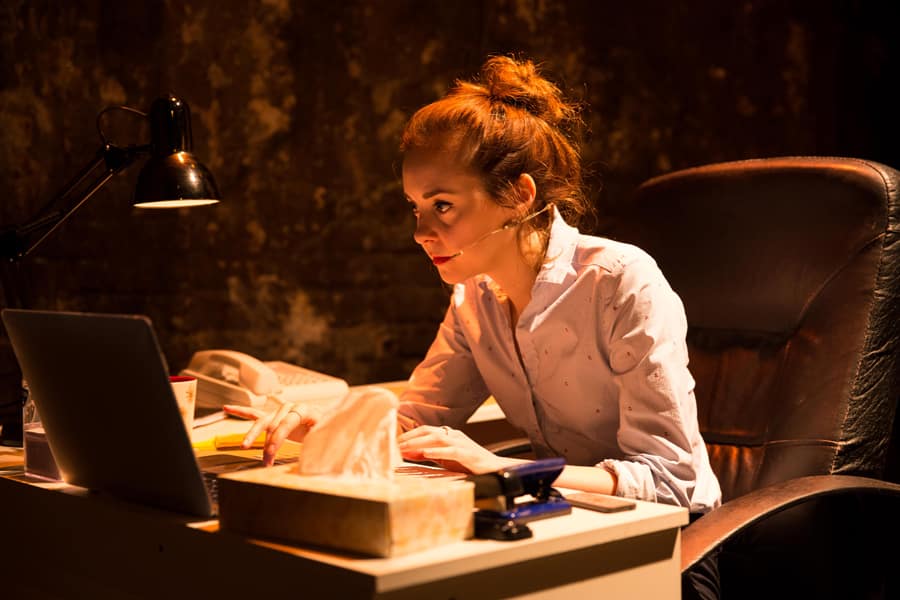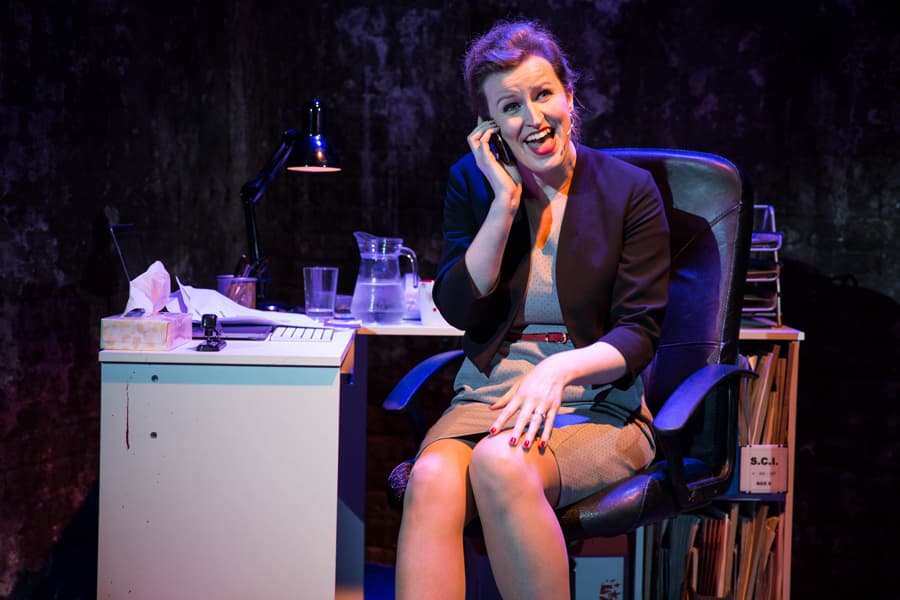
Lock And Key
Vaults Festival
14th March 2018
3 Stars
Nadia Fall has just taken over the Theatre Royal Stratford East and the first thing she needs to do, with reference to this show, is to explain how her decision to axe the Musical Theatre Workshop there is going to help the development of new women writers of musicals like Barlow and Smith. A little while ago, I sat in the foyer of the theatre, noshing on fine grub from its delectable Caribbean Kitchen (another victim of Fall’s busy axe), listening to the brilliant craftsmanship of their elegant, melodious, catchy tunes with such witty and neatly turned lyrics. Bella Barlow (music) and A C Smith (lyrics) were clearly writers of accomplishment and energy, and a show by them would be something to greet with some expectation. It was wonderful that they had found a platform upon which to parade their excellent wares: all the more important, if we bear in mind that not everyone has been as welcoming or as encouraging.
How interesting, then, to find this show, an hour-long piece for two accomplished singing actresses, Evelyn Hoskins and Tiffany Graves, presenting something that no-one could have anticipated. They have taken the brave and daring step of turning away from their catalogue of stand alone, or themed collections of songs, and decided to embrace a wholly new and adventurous theatrical language. Who could have seen that coming? Again, these must be writers of the first creative water to take on such a challenge. What on earth is Nadia thinking of, ousting them from under her roof?

In ‘Lock And Key’, we have a classic situation: Hoskins is Jess, a put-upon intern in a minute publishing house, and Graves is her dragon-lady boss, Samantha (any confusion with Miranda from ‘The Devil Wears Prada’ is entirely, I’m sure, to be blamed on the real world: Smith lived this nightmare for real herself in a job she is in no hurry to return to). Into this interesting clash of types the writers introduce further mythic elements: Samantha has to go off on business and leave the office in the hands of her junior, a scene which produces one of the most scintillating musical moments in the hand-over of the ‘Little Red Key’, a super number that just ’emerges’ out of the dramatic texture (this always sounds so ‘natural’ when it happens, and it is so terribly, terribly difficult to write), thus producing a skit on the ‘Sorcerer’s Apprentice’ trop, because – of course – Jess cannot resist the embargo on touching said key. This then morphs into another legend, when Jess uses the key to discover the dark secrets of the house, in a play on the old Bluebeard’s Castle story.
So, it is strong meat. Against the stark symbolism of the tale, however, the staging could hardly be more reassuringly regular and natural: designer Alice Simonato packs the tiny performance space with the oppressive clutter of a squeezed office. This does create an ominous effect, but it also stints on manoeuvrability for the performers, who are clearly uncomfortable in edging nervously this way and that, desperate not to knock everything over, or topple off the precipitous stage. Needless to say, there’s no choreography in the show. It is left to the lighting of Richard Williamson to provide variation of mood: he is not called upon to do much. This, again, has the advantage of underscoring the believability of what we see and hear, but does nothing to drawn us deeper into the mythic resonances of the situation. In this sense, it is the exact opposite of what director Adam Lenson achieved with his sublime, operatic gestures in ‘Whisper House’ at The Other Palace.

I think that comparison is instructive. A lot of people didn’t really understand that production. Me included. Yet, looking back on it – and one has to, because it was so powerfully, indeed magisterially conceived and exquisitely well executed: it simply refuses to dislodge itself from the memory – one has to reflect that, and I think I may have said this somewhere else, Lenson is so far ahead of everyone else, that we’re constantly playing catch-up with him, trying to keep up with the mercurial inventiveness of his mind and the artistry of his expression.
In which case, weeks or months from now, one may very well find oneself thinking and feeling about this production of ‘Lock and Key’ very different things from what one experiences in the first instance. That is a great thing: for a work to have a lasting and enduring impact upon the public. However, it is something one must be wary of, whenever one is asked for an opinion on it. Caveats have to be appended. Many creatives in the arts struggle to reconcile themselves to the tension between their work, which involves months or years or immersion in a project, and the public’s instantaneous and apparently arbitrary reaction to it. And critics belong to the second group. They try to voice a reasonable response, but they are only human and just as capable of misunderstanding what they see or hear as anyone else passing by.
What remains of this show, for the time being, is the running, bubbling, Janacek-like music of the chamber ensemble guided expertly by MD Tamara Saringer, and the surprising richness and complexity of the musical textures conjoured up by Bella Barlow, whose own orchestrations are heard here, and brilliantly fine they are, too (even if the amplification in the small, bright acoustic of the Pit was a shade overwhelming). Smith’s lyrics are perfectly dovetailed with her spoken text and never draw attention to themselves, while constantly building the characters before our eyes. As graduates of Stratford East these two have much to celebrate and we have much to look forward to from them. They are going places.
